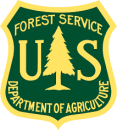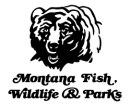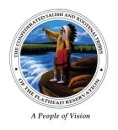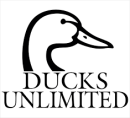Ways to Get Involved
Rocky Mountain Elk Foundation members have volunteered thousands of hours to make Lost Trail National Wildlife Refuge safer for wildlife.
You too can volunteer for Refuge projects by contacting our main office. Give us a call at 406-885-8598.
Volunteering
Volunteers and partners are valuable allies of the U.S. Fish and Wildlife Service. These individuals and groups are vital to fulfilling the Service’s mission and goals. Each year, they give generously their time, expertise and resources to the National Wildlife Refuge System.
Volunteers and partners are critical to fulfilling the goals and objectives for habitat and wildlife management on Lost Trail National Wildlife Refuge. For more information on volunteering on Lost Trail National Wildlife Refuge – please contact our office at 406-885-8598.
Our Partners
The National Wildlife Refuge System is committed to building partnerships which encourage conservation and preservation of our natural and cultural resources. Partnerships with the Refuge System bring innovative approaches to solving land management and water disputes in the most environmentally protective manner. Scientifically-informed and technologically-based stewardship of our public lands, waters, wildlife and special places must be collaborative efforts between the Refuge System, other government agencies, and private organizations if conservation efforts are to succeed.
Many opportunities exist on the Lost Trail National Wildlife Refuge to continue existing partnerships or establish new ones. These include the following:
Montana Fish, Wildlife, and Parks was a strong proponent for refuge establishment. Their support continues today with collaboration of wildlife data, hunting regulations, enforcement and advocacy of ecosystem protection.
The Refuge has a vital partnership with the Natural Resources Conservation Service (NRCS) for coordination and management of refuge lands tied to a Wetlands Reserve Program easement. The NRCS has helped plan and fund wetland restoration and fencing projects on the Refuge.
A good working relationship with Plum Creek Timber Company is critical for refuge management as many refuge roads and fences are shared with the timber company.
Fish and Wildlife Service Migratory Birds Migratory birds are some of nature’s most magnificent resources. They have a significant role in the health of the environment, economy, and culture in the U.S. and internationally. The mission of the Fish and Wildlife Service’s Migratory Bird Program is to conserve migratory bird populations and their habitats for future generations, through careful monitoring, effective management, and by supporting national and international partnerships that conserve habitat for migratory birds and other wildlife.
Partners in Flight Partners in Flight / Compañeros en Vuelo / Partenaires d’Envol was launched in 1990 in response to growing concerns about declines in the populations of many land bird species. The initial focus was on neotropical migrants, species that breed in the Nearctic (North America) and winter in the Neotropics (Central and South America), but the focus has spread to include all landbirds. The central premise of Partners in Flight (PIF) has been that the resources of public and private organizations in the Western Hemisphere must be combined, coordinated, and increased in order to achieve success in conserving bird populations in this hemisphere.
Montana Audubon's mission is to promote appreciation, knowledge and conservation of Montana's native birds, other wildlife, and natural ecosystems to safeguard biological diversity for current and future generations. Founded in 1976, Montana Audubon has built effective programs in public policy, education, and bird conservation to serve their members and Montana's nine community-based Audubon Chapters.
Flathead Audubon Society is affiliated with Montana Audubon, and the National Audubon Society. They are one of 10 such Audubon chapters in Montana. Flathead Audubon’s over 400 members live in a region stretching from the Idaho border to the continental divide, and from the Canadian border to the northern border of the Salish-Kootenai lands. Flathead Audubon provides a variety of education programs for both children and adults, manages the Owen Sowerwine Natural Area cooperatively with Montana Audubon, and actively promotes the conservation of bird and wildlife habitat in the Flathead Valley.
The Refuge has benefited from partnerships with youth programs such as Montana Conservation Corps and local schools including Pleasant Valley School and the Montana Academy. The refuge is proud of our unique partnership with Big Fork High School GIS classes.
Federal agencies including:
- USGS (Northern Rockies Science Center) and many others
- Montana State Lands (Department of Natural Resources Conservation), on wildlife and habitat management
- Plum Creek Timber Company
- Northwestern Energy (formerly Montana Power Company)
- Conservation Districts, county commissioners, fire districts, weed districts, and sheriff’s departments
Nongovernmental organizations including:
- Rocky Mountain Elk Foundation
- Flathead Audubon
- Montana Conservation Corps
- Local schools including Montana Academy, Pleasant Valley School, and Big Fork High School GIS Classes
- Adjacent private landowners and local communities







